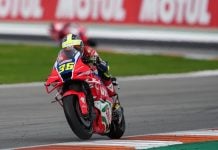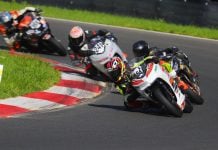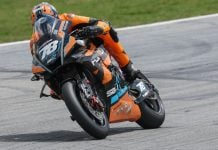FIRST PERSON/OPINION: Via e-mail: I just read with much interest the SAE press release regarding a new standard for motorcycle exhaust sound level. As a professional recording engineer who designs and builds a good part of his audio equipment and knows a bit about sound, and a motorcyclist with over 40 years of experience, I would like to express my opinion on the matter. The problem of exceedingly noisy motorcycles is definitely one that can not be ignored if we do not wish the already negative attitude towards motorcyclists to get worse. Yet, things have to be done in a rational and realistic way if we want them to be constructive and, in my opinion, the SAE’s proposed procedure misses the target. Sound Pressure Level (SPL) can be measured using different “weightings” depending on the intended use of the collected data. The most commonly used is the “A” weighting and the readings are made in “dBA” or “A” weighted decibels. While being a very convenient standard when making measurements in an architectural environment, it can prove almost useless in other circumstances. One look at an “A” curve will show that the sensitivity starts rolling off around 1000 Hz at a rate of 6 dB per octave. Basically, what that means is that a lower frequency sound (“deeper” exhaust tone) will give a lower reading for a specific sound pressure than a higher frequency sound at the same level. One important fact to remember is that a difference of 3 dB represents a ratio of 2 to 1 (-3 dB is half the acoustical power and +3 dB is double the power). Although the ear does not perceive a 3 dB difference as half or double, it is the actual measurement that matters in our case. Let us see what that means when applied to the proposed procedure: – “92 dBa at idle for all motorcycles”: large capacity twins idling at very low RPM and producing weak harmonics get a 10-15 dB break over 4 cylinder sport bikes idling above 1000 RPM with their fundamental sound wave around 400 Hz and very strong second (800 Hz) and third (1200 Hz) harmonics. – “96 dBa for motorcycles with fewer than 3 cylinders and more than 4 cylinders at 2000 RPM”: this gives an additional 4 dB break (compared to next point) to large twins for a comparable idle/test RPM ratio as they would still be below the roll-off point of the “A” curve. As for bikes with more than 4 cylinders, it has been a while since I saw one… – “100 dBa for motorcycles with 3 or 4 cylinders at 5000 RPM”: that is a mere 4 dB for 4-5 times the idle RPM with fundamentals and harmonics now all sitting comfortably in the most “sensitive” part of the “A” curve. One factor that is completely omitted in this procedure is the difference in SPL (and perceived loudness for that matter) between “no load” and “under load” readings. A fairly mild sounding big twin at idle can sound and feel like an earthquake when solicited whereas the difference will be much less on a 4 cylinder machine. My perception of these proposed procedures is that they are meant to give the general public the impression that they are fairly treated but I feel they fall short of being fair. The thing that probably bothers me the most is this “let’s give big twins a break” attitude. It is probably a coincidence that all US manufacturers only make twins… All in all, the proposed procedure is certainly a lot better than our current rules in Québec where a police officer can ticket you simply because you are using a non-OEM muffler without any SPL measurements of any sort. On the other hand, if we are going to establish a procedure, why not design one that is truly fair and realistic? Jean Landry Verdun, Quebec, Canada
Reader Feedback On Proposed SAE Motorcycle Exhaust Sound Level Testing Procedure
Reader Feedback On Proposed SAE Motorcycle Exhaust Sound Level Testing Procedure
© 2009, Roadracing World Publishing, Inc.






